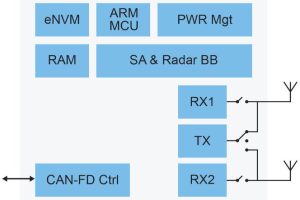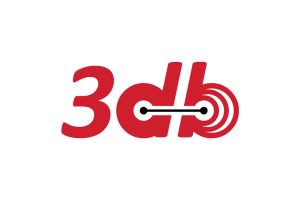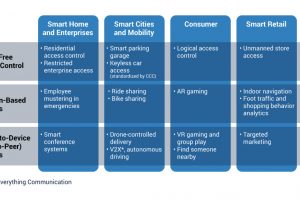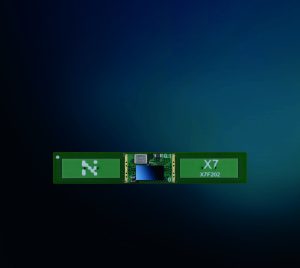 This year is the time for ultra-wideband to rise and shine, says Jean-Christophe Doucet.
This year is the time for ultra-wideband to rise and shine, says Jean-Christophe Doucet.
Ultra-wideband (UWB) was once considered a niche, but intriguing alternative to incumbent presence detection and tracking technologies, including radio frequency identification, localisation trackers and infrared sensors. Despite its advantages, the industry overlooked UWB until recently. Experts now project that UWB implementation will grow significantly. They estimate UWB will have a higher compound annual growth rate than Wi-Fi or Bluetooth from 2023-2030, totalling 18%.
While UWB’s initial applications focused on peer-to-peer communication and ranging, new UWB implementations focus on sensing. This opens the technology to additional use cases. UWB is a worthy challenger to other wireless technologies due to its reliable presence detection and tracking capabilities, excellent co-existence properties, communication performance and unique human presence sensing. For example, UWB (radar) is so precise that it can even save lives in detention centres by sensing sleeping inmates’ vital signs.
While this technology may mark the next wireless revolution as it matures in 2024, what makes it so unique?
Examining ultra-wideband
At its core, UWB is a low-power, short-range wireless technology that uses radio waves to sense the presence of objects and people, complete low-latency data transmission and provide information about an object or person’s location. While Bluetooth and Wi-Fi share some of these core qualities, UWB transmits tiny, very short pulses instead of a continuous radio frequency (RF) carrier to achieve low-power wireless sensing over short distances and facilitates low-latency data transmission. The resulting radio signal bandwidth ranges from 500MHz to 1GHz, or even higher, hence the name ultra-wideband (Figure 2).

Figure 2: UWB technology transmits minuscule, ultra-short pulses instead of a continuous radio
frequency carrier
With an RF range spanning 3.1GHz to 10.6GHz and the transmitted energy spread on an ultra-wide band, the power level of these frequencies is below the noise floor, resulting in low power consumption. UWB’s technological advantages also include fine-time resolution that enhances the ability to determine distance based on time-of-flight of radio waves, even in heavy multi-path environments, enabling UWB to track other UWB devices precisely.
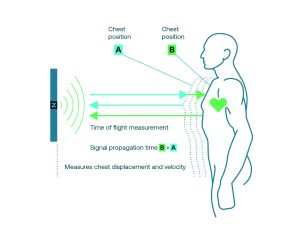
Figure 1: A UWB sensor can sense the slightest movements, such as a breathing motion or a heartbeat
Aside from these established capabilities UWB can sense even tiny movements, including a person’s respiration and heartbeat, enabling it to track people in a room without carry-on devices. A UWB sensor transmits electromagnetic pulses and listens for reflected echoes in much the same way as a traditional radar. It can sense the slightest movements, such as a breathing motion or a heartbeat (Figure 1). These characteristics and technological advantages facilitate deployments that adhere to worldwide regulations in numerous industries.
UWB’s inflection point
In its early days, UWB had garnered significant attention from early adopters, confirming this technology’s diverse applications, as it enabled ‘super-fine’ indoor positioning and secure identification of devices based on distance or fine localisation.
That was just the beginning. In parallel, the idea of using UWB to sense its environment by receiving and analysing the echo of the transmitted radio signal from its surroundings was emerging. This is UWB sensing, also known as UWB radar.
Until 2018, UWB was largely unknown. Many potential adopters seemed incredulous about UWB’s benefits until widespread implementation in smartphones validated its capabilities. This materialised in September 2019 when Apple announced the iPhone 11, implementing the ISO-802-15-4z UWB standard with enhanced security mechanisms. There was more to this story that was happening behind the scenes. One year earlier, the car manufacturer Jaguar Land Rover implemented UWB into a new car access solution to protect against “relay attacks”. This use case seemingly sparked interest from smartphone manufacturers, opening the door for UWB implementation in consumer electronics.
The laptop inflection point
While Apple and other smartphone manufacturers continued to integrate UWB ranging, another inflection point occurred in 2021. Laptop manufacturer Lenovo adopted UWB sensing in its X1 models, eliminating automated, unreliable time-outs that trigger the user’s logout from a Windows session through passive infrared sensors (PIRs). Unlike PIRs, UWB can detect presence through a person’s tiny motions, even if they are standing still, enhancing reliability to achieve true human presence sensing.
While smartphone and computer manufacturers already use UWB for detection and tracking, privacy and e-health applications, the automotive sector is beginning to adopt UWB to serve additional lifesaving use cases. Amid increasing child car safety regulations to prevent vehicular heatstroke, UWB is emerging as an alternative for child presence detection (CPD) in vehicles, with its technological capabilities outpacing traditional CPD technologies such as 60GHz.
Lifesaving sensing in automotives
Vehicular heatstroke is a preventable, but fairly regular occurrence; in the US, an average of 38 children die per year from it and it has claimed the lives of more than 950 children since 1998. To prevent these tragedies, recent regulatory actions in the US via the Hot Cars Act and in Europe via the New Car Assessment Programme require car manufacturers to install CPD systems in new vehicles from 2025, with 60GHz being the current prevailing CPD technology. UWB radar sensors, however, offer a promising alternative for CPD use cases and are already attracting interest from major automotive manufacturers.
UWB provides car manufacturers with simple integration requiring no model tuning or calibration. This makes UWB easier and cheaper to integrate than 60GHz, which typically requires calibration specific to the car model. UWB’s power consumption can be as low as a few µW, which is at least five-times lower than 60GHz’s power consumption, with the latter suffering from higher power consumption due to its frequency range and legacy architecture. UWB also features better penetration abilities. It can sense through clothes and car seats while being less sensitive to obstacles and materials within car cabins. This is particularly advantageous as car cabins are highly reflective multi-path environments with interior objects that block and reflect other radio waves.
Raising awareness of ultra-wideband
As UWB is integrated across many vertical markets in 2024, companies and consumers can expect heightened interactivity between humans and objects. Companies must educate themselves about UWB’s technological advantages to exploit its full potential for various use cases in multiple industries. After all, widespread integration of UWB may mean the difference between safety and tragedy in the coming years.
Visit Novelda at Embedded World – Hall 5-433.
See also: VLSI Symposium: Imec’s low-power UWB transceiver ranges to 1.4mm
 Electronics Weekly Electronics Design & Components Tech News
Electronics Weekly Electronics Design & Components Tech News
